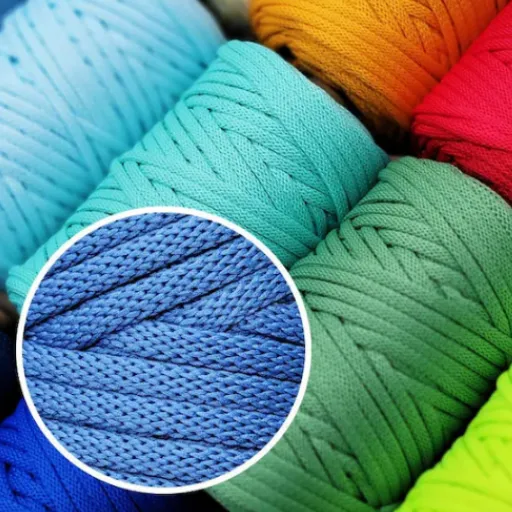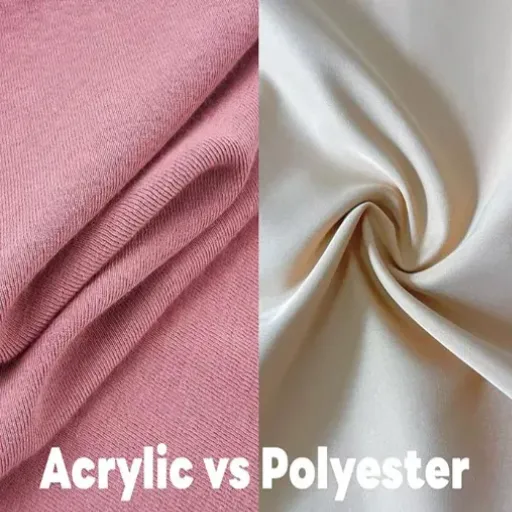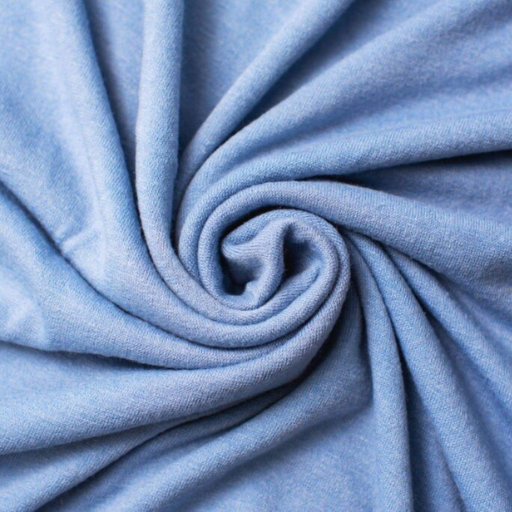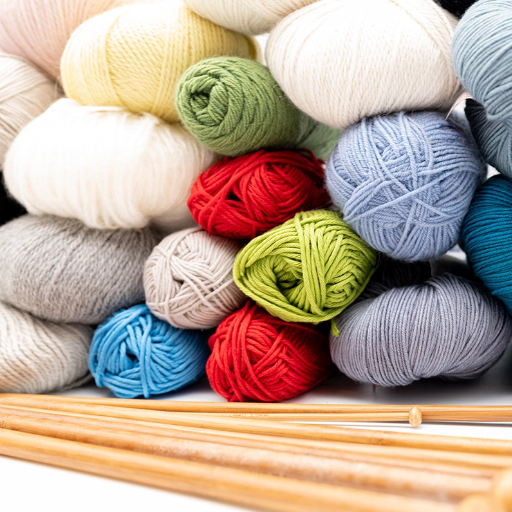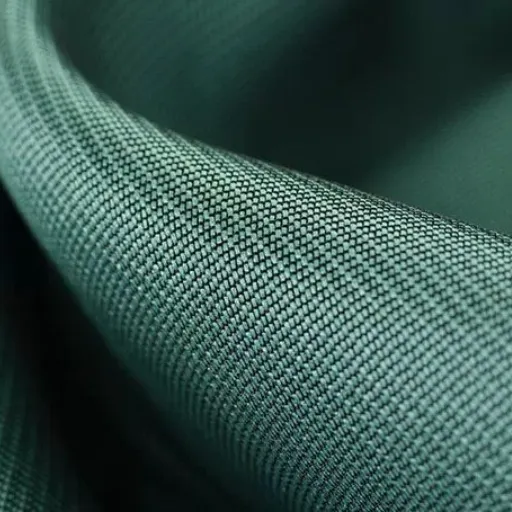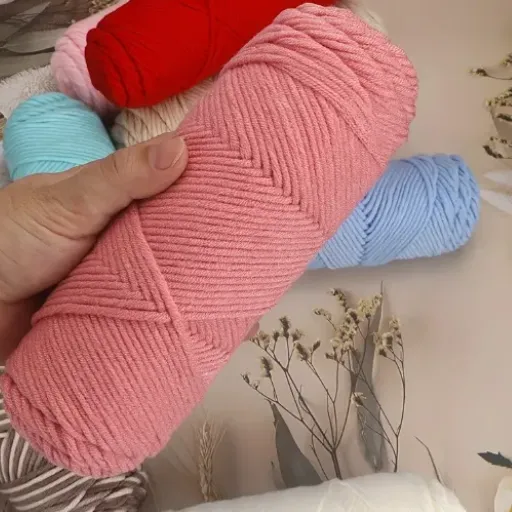Polyester staple fiber and yarn types have been existing jointly for the global textile industrial chain in all of their applications: clothing to industrial applications. Knowing price trends in the sector is of utmost importance to manufacturers, traders, and stakeholders for their competitiveness. This blog intends to analyze the recent changes in the price system of PSF and yarn and the key symbolic price elements; the situation of raw materials, demand in the market, and economic influences- shaping such price change. From an insider in the industry to one setting foot in the textile market for the first time, this will surely give some clues for informed decisions and ways to adapt to the changing market environment. Stay with us as we untangle the causes affecting the pricing trends of polyester and their interpretations for the industry.
Market Overview of Polyester Staple Fiber and Yarn
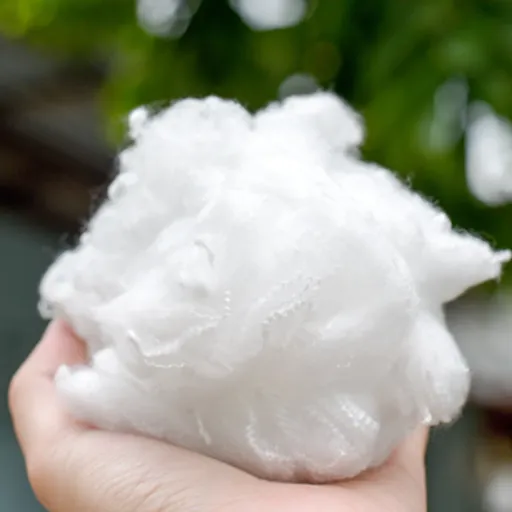
Current Price Trends
Raw material cost fluctuations, supply-side restrictions, and demand-side considerations both in the domestic and overseas markets combine to forge the current price trends of polyester staple fiber and polyester yarn. Oil prices often stand on the front of such considerations; since crude oil is behind the petrochemical sphere, an increase in oil prices inevitably increases production costs of PSF and yarn, which in turn makes its market prices rise.
In the same vein, supply chain disruptions-the kinds involving delays in shipping and transport-contribute further to the scarcity and pricing of polyester materials. These disruptions, brought on by geopolitical tensions or unforeseen increases in demand, bring inconsistency to pricing. In general, regions where textile manufacturing activity is high and where raw materials are consistently available have fewer disruptions; in the last few months, even those markets have registered some fluctuation.
Being an essential factor, with the rise of demand for green and recycled materials, consumers and industries have started a slight alteration of their buying behavior, giving influence to fixing the prices of conventional polyester products. Although there are still a number of industries that manufacture and consume standard polyester, the increase in environmental awareness fosters interest in alternative fibers. Changes such as these take place very slowly, implying that henceforth, the core demand for PSF and yarn determines their pricing trends. Nevertheless, this creates a fluid situation in the world of polyester, pricing controlled by a mixture of factors- some predictable and some ever-evolving.
Factors Influencing Price Fluctuations
Raw material costs are one of the most variable price components of polyester staple fibers and yarns, with the main raw material for it being crude oil. Since polyester is created from petroleum-based products such as ethylene glycol and terephthalic acid, the changes in the price of oil in the international marketplace are directly reflected in the cost of polyester production. This linkage makes the polyester markets susceptible to geopolitical events, alterations in energy policies, and economic forces within oil-producing countries.
Another important factor is supply and demand forces within the textile and manufacturing sectors. When demand for polyester products increases and supply capacity through production or logistical constraints cannot meet such demand, prices start to rise for such polyester products. On the contrary, oversupply in the market many times brings along with price decline. Seasonal patterns of demand, worldwide trade flows, and consumer preference patterns are also behind changes in supply-demand forces.
Lastly, environmental regulations and the growing focus on sustainability heavily influence polyester price trends. The inclination towards greener substitutes and recycling strategies pushes up polyester fiber production costs. On the other hand, policy measures can steer market pricing and trade flows with tariffs on one hand and subsidies on the other. The linkages between such factors must be understood to predict price trends and fend through the maze of the polyester industry.
Global Trade Dynamics and Supply Chain Issues
World trade dynamics are the pivot on which the prices of polyester staple fiber (PSF) and filament yarn revolve. Raw material availability fluctuates: Single big-ticket items are crude oil derivatives like purified terephthalic acid (PTA) and monoethylene glycol (MEG). Such fluctuations impact the costs of production directly. Countries’ importers of these raw materials, therefore, stand vulnerable to price jumps and volatility, resulting from any geopolitical tension, trade restrictions, or natural disruptions.
Supply chain issues induced further complications in pricing polyester products. Congestion at port, high freight, and delays in transshipment add on the extra costs, which manufacturers frequently pass down the supply chain. Such disruptions, therefore, sow regional imbalances in supply and demand, and in turn, carve out price differentiation in markets. For instance, a slowdown of production in one region could pose price hikes in another if supply fails to meet demand.
For instance, a change in the export or import policy in a major country will impact polyester prices. The imposition of tariffs, anti-dumping duties, or a relaxation of any trade barriers could change how materials flow and ultimately affect the prices paid by both producers and consumers. On the contrary, some tendencies towards regionalization aimed at limiting the risks in the supply chain may result in diminished dependence on global trade but at localized pricing. Knowledge of these factors will help anticipate changes in market trends and opportunities and increase the ability to make informed decisions.
Production Processes for Polyester Fiber and Yarn
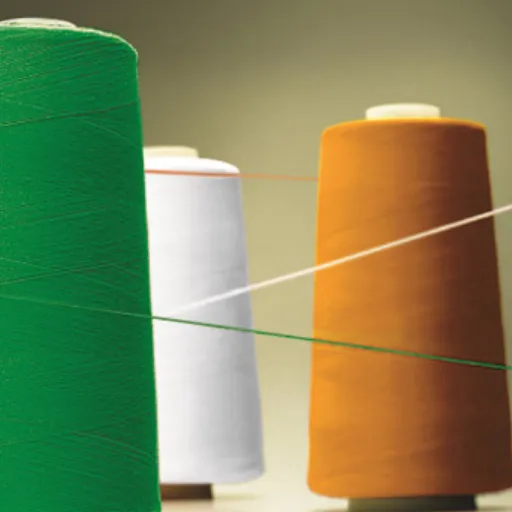
Manufacturing Polyester Staple Fiber
Polyester staple fiber manufacturing initiates with the polymerization of purified terephthalic acid (PTA) and monoethylene glycol (MEG). The reaction produces polyester polymer chips that are used as raw material for PSF production. The chips are dried to eliminate moisture so that high-quality fiber may be produced from further processes.
The dried polymer chips are melted and extruded through spinnerets to develop continuous filaments. The filaments are chilled and stretched to orient the molecular structure and thus give strength and resilience to the fiber. Continuous filaments are further cut into short lengths of uniform size for the formation of staple fiber that finds vast applications in textiles and non-woven fabrics.
The fibers undergo further processing after cutting through crimping, drying, and finally baling. Crimping creates a natural texture in the fibers, believed to improve their processing and blending ability. Drying removes moisture remaining after cleaning of the polymer while baling ensures the packing of the PSF in a compact way for convenient transportation and storage. Together they create versatile and durable polyester staple fibers that are widely used in such industries as apparel, home furnishing, or automotive manufacturing.
Filament Yarn Production Techniques
The production of filament yarns starts with the polymer melt spinning process. Here, polymers are melted by heat to form a waxy viscous liquid. The term “melt” assumes the polymer is in the molten state and being extruded through spinnerets having several fine holes to form continuous filaments. These filaments are soft, so they must be solidified, usually by cooling, in air or water.
Afterwards, the filaments are then drawn under warm or hot conditions, so that the orientation of polymer molecular chains and strengthening can take place. Such stretching reduces the diameter to the desired thickness, thus enabling it to have just the right mechanical properties for particular applications, such as wear or else flexibility.
After drawing, the filaments may be texturized for special purposes or left smooth for a fine finish. Texturizing produces crimped or coiled structures mechanically or thermally, which help with bulk, insulation, and elasticity. Finally, the filaments are wound onto spools, ready for textile, industrial, and packaging applications. This very precise process ensures the production of good-quality filament yarns for myriad uses.
Polyester Yarn Manufacturing: Quality Control
Quality control in polyester yarn manufacturing is an important constituent to keep constant product quality and purpose. It starts with checking raw materials, such as polymers used in making polyester. Inspecting these materials for purity and consistency averts defects from sprouting at the early stages of production. An equal quality of polymers is imperatively necessary to obtain physical and mechanical properties in yarns.
Before the production process, the quality checks are done continuously to observe filament thickness, strength, or uniformity. Technological advancements such as optical sensors and automated systems can be used to detect any variation in the process so that corrective measures can be taken immediately. These parameters, such as pressure or temperature, are controlled in the extruding or spinning processes to produce filaments of exact specifications. Testing for properties such as tensile strength and elasticity may be required to verify that the yarn will be suitable for its intended applications.
Finally, the quality control stage includes extensive testing of the polyester yarn. These tests may comprise visual examination, mechanical tests, and durability to certify that the yarn maintains consistency and performance under varied conditions. With proper documentation and traceability through each manufacturing process step, standards can be maintained while customer satisfaction is ensured. Strict quality control really assures fabricators that they will have a polyester yarn product so good that it meets industry standards.
Global Demand and Key Markets

Emerging Opportunities in Asia-Pacific
The Asia-Pacific region is considered among the fastest-growing markets of polyester staple fiber and filament yarns. Primary growth of the market comes from demand in industries such as textiles, automotive, and construction, where polyester is valued for durability, versatility, and low cost. Nations like China, India, and Vietnam witness robust growth in the manufacturing sectors, further amplifying the demand for quality polyester yarns for both domestic and export purposes.
Competitive polyester filament yarn and staple fiber pricing came to be positioned very much in the centre of the Asian region. The combination of factors such as lower costs of production in this area, coupled with changes in manufacturing, had made producers able to sell their polyester products at much lower rates. These cost advantages, plus government incentives to encourage the textile and apparel sector, are paving the way for more investment and development in the region.
The international trend toward sustainability has led to increased opportunities for greener polyester solutions in the Asia-Pacific. Rising consumer awareness and strict environmental regulations have forced manufacturers to go for recycled polyester fibers and cleaner production methods that minimize carbon footprints. This dual-step approach fortifies global sustainability claims while endowing the region with leadership in the future textile industry.
Market Insights from Europe
The market for polyester staple fiber (PSF) and filament yarns is steadily rising, with demand from the automotive, home textiles, and apparel sectors. The consumer’s growing focus on sustainability has further pushed the recycled polyester materials across Europe. This situation is gaining momentum with regulators imposing more stringent regulations to penalize or restrain actions that cause environmental impacts, thus pushing manufacturers toward more eco-friendly methods of production.
Price trends in PSF and filament yarns in Europe have witnessed moderate fluctuations, primarily governed by raw material prices and energy prices. The pricing dynamics get influenced because of the import dependency of the region on feedstock like purified terephthalic acid (PTA) and monoethylene glycol (MEG), and supply-side pressures. Simultaneously, increased focus on circular economy targets has encouraged investments in recycling technologies, adding a bit to the production cost and hence pricing.
For the advancement of sustainable textiles, Europe started innovative recycling and renewable energy systems. While global competition and erratic import prices bother Europe, the place is expected to stay competitive as it focuses on technological processes in low-impact manufacturing. Hence, European policies inclined toward sustainability will topple the prices of polyester products in Europe.
Demand Trends in India and China
India and China dominate the global market for polyester staple fiber and filament yarns on account of their gigantic manufacturing capacities and huge local demand. Both countries have extensively relied on polyester as an economical and versatile textile material, which sustains high growth. The acceptance of synthetic fibers for apparel and technical applications has become another market-boosting factor.
In the case of India, the rise in disposable income, urbanization, and a shift toward affordable textile products, in particular polyester products, has supported the growth of demand. Moreover, government initiatives to encourage domestic manufacturing and the growth of the textile industry have also helped this market. However, some challenges remain the prices of raw materials going up and efforts for sustainable alternatives.
China ranks first as a polyester producer in the world because of its large supply chain and fully integrated infrastructure. Demand comes from both domestic consumption and exports, as Chinese producers supply products to a vast international market. With government investment into upgrading industries and recycling technologies, China has stayed on top while also tackling sustainability issues in this sector.
Impact of Raw Material Costs on Pricing

Prices of Crude Oil and Their Influence on Those of Polyester Staple Fiber and Filament Yarns
Being the principal raw material in the manufacture of polyester, the price of crude oil plays an enormous role in determining the prices of polyester staple fibers (PSF) and filament yarns. Changes in the prices of crude oil easily translate to the prices of raw materials like purified terephthalic acid (PTA) and mono ethylene glycol (MEG), which are petrochemicals derived from crude oil. Any increase in crude oil prices results in increased polyester production costs and therefore market prices of PSF and filament yarns.
Increases or decreases in crude oil prices affect the global supply chain and transportation costs, eventually imposing another layer of demand pressure for polyester products. For countries that heavily import polyester, rising logistics costs will mean an extra increase in prices besides highs in raw material costs. On the contrary, decreasing crude oil prices generally lead to cheaper raw materials, and that may probably be transferred into lower polyester product prices.
But there are other factors like supply and demand, exchange rate, and working capacity change,s which, in combination with crude oil prices, build the gross price indices for polyester staple fiber (PSF) and filament yarns. These interlinked factors are the very reason behind the polyester market’s sensitivity against the worldwide economic situation, which thus needs to be observed constantly for accurately forecasting the polyester price trend.
Raw Material Supply Chain Challenges
The polyester industry undergoes disruptions in the raw material supply chain and experiences an effect on the price fluctuation of polyester staple fiber (PSF) and filament yarns. One goal is being dependent upon petrochemical derivatives such as PTA and MEG which can suffer disturbances in production and transportation due to geopolitical tension, natural calamity, or shutdown of production facilities in some locations. Supposed to nonavailability, they create shortages that ripple through the polyester market.
Being a crucial input in polyester manufacture, the unpredictability in crude oil prices does destabilize the cost framework of PSF and filament yarns. Additionally, a conspicuous increase or diminution in demand for other derivative applications of crude oil can cause a bottleneck or sporadic supply of raw material for polyester manufacturing.
Additionally, transport and logistical issues such as port congestion, freight cost increases, and trade restrictions will further aggravate this already challenging environment. Such logistical challenges might increase lead time by holding up raw materials and inducing price uncertainty. To curb these supply difficulties, one will have to keep a keen watch on economic trends worldwide and diversify sourcing options for raw materials in parallel with investing in newer production techniques so as to reduce dependencies and create a resilient supply chain.
High Tenacity versus Regular Polyester Fibers
Different characteristics of polyester-made fibers include strength and toughness; such characteristics depend on the differences in chemical structure and manufacturing process. High tenacity fibers are so named because the tensile strength of these fibers was always kept high at the production stage. This makes fibers highly resistant to mechanical stress, such as stretching, tearing, and other forces. Thus, subjected to harsher forces in applications of industrial materials, ropes, and safety equipment, they must really rely on using tough ones. They are weaker than high tenacity fibers and, in contrast, are commonly used in foreign textiles due probably to their ability to be made into numerous products, low price, and enough strength for general use.
From a pricing perspective, polyesters with high tenacity fibers always tend to cost more than standard polyester fibers. This price difference originates from the special processes and stringent quality control that production of high tenacity fibers demands. On the other hand, since standard polyester fibers are available in massive quantities, they benefit from economies of scale, which makes them the appropriate choice for the most common uses such as garments, upholstery, and consumer products.
Prices of polyester staple fibers and filament yarns are affected by many factors, such as raw material costs of purified terephthalic acid (PTA) and monoethylene glycol (MEG), global supply and demand, energy costs, and so on. Pricing trends can be considerably affected by geopolitical issues and occurrences taking place in supply chains. In searching to contain fluctuations in the world price of polyester fibers, it is advisable to observe market trends all over the globe and look for alternatives in sourcing and production.
Sustainability and Environmental Concerns
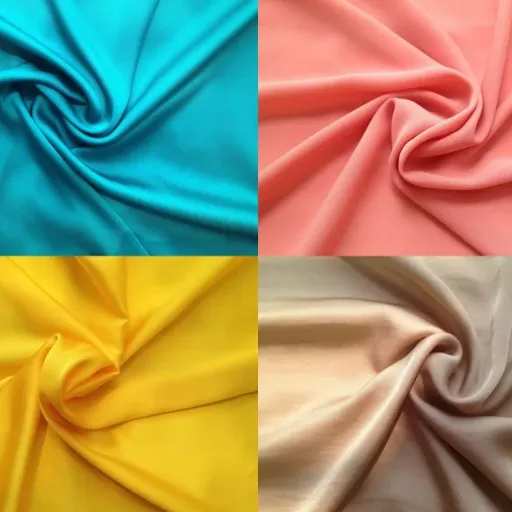
The Rise of Recycled Polyester
Recycled polyester is found to be an increasingly environmentally friendly alternative to traditional polyester, usually fashioned from plastic bottles and other waste. In the primary production process of recycled polyester, dependence is reduced on the virgin petroleum resource, thereby lowering energy consumption and greenhouse gas emissions. By recycling existing plastic waste, recycled polyester ranks high as an environmentally friendly solution towards battling the ever-growing problem of plastic pollution.
Several factors influence price determination for polyester staple fibers and filament yarns, including recycled. Global crude oil prices, energy cost, and availability of raw substances such as PET waste are among the important variables that dictate each of these costs. Furthermore, government legislation and mounting consumer consciousness for the environment are on the horizon, pushing sustainable fibers at the grassroots level and thereby creating a new arena for pricing competition and innovation.
To remain competitive and adhere to the sustainability objectives, manufacturers and stakeholders have to track market movements and invest in recycling technology. Utilizing recycled polyester helps address environmental concerns and at the same time support shifting consumer preferences for ethically made and sustainable products. Further support of recycled materials in the supply chain remains a key transformation strategy to realizing a truly circular and greener textile industry.
In the Market: Eco-Friendly Alternatives
Eco-friendly alternatives in the market still hold the spotlight as businesses and consumers rally around the environmental cause. Popular options include organic cotton grown without harmful synthetic pesticides or fertilizers and hemp, a durable and resource-efficient material. These natural fibers not only carry fewer chemicals but are also good for the soil and use less water as compared to conventional textiles.
The second alternative has great potential in the use of plant-based or biodegradable raw materials capable of being decomposed more readily in natural environments, such as Tencel or cork fabric. Besides that, upcycled materials constructed from pre-existing fabrics or wastes stand as an innovative and sustainable way to keep the product’s life-cycle going while minimizing demand for virgin materials. Recycled textiles, such as recycled nylon or polyester from discarded plastic bottles, reduce the use of resources and the level of greenhouse gas emissions from production processes.
Customers might want to look at innovations like lab-made fabrics and bioengineered textiles, which are essentially super-scientific ways of engineering traditional material properties for environmental conservation. Choosing these alternatives and spreading the word on their use is how both individuals and industrialists can do their part toward creating a greener and more eco-conscious world for textiles.
Impact of Sustainability on Pricing Structures
Sustainability greatly impacts the price structure in the textile industry. The production of environment-friendly raw materials like organic cotton, laboratory-made fabrics, or recycled fibers often requires being technologically advanced and resource-intensive, aggressive costing the production higher than its conventional counterparts such as polyester. These practices further increase the costs incurred by the companies if made towards installations for renewable energy, water optimization, and waste management.
The heavy costs incurred by such operations, however, are compensated with the long-term benefits as may be evident for producers as well as consumers. Sustainable production means reducing the impact on the environment; conserving vital natural resources, and joining businesses seeking consumer support in ethical product development. To an eco-conscious consumer, the high prices of environmentally friendly textiles measure up to supporting a good cause and often getting a more durable product.
Despite the economic considerations, the scale of production and mass adoption of sustainable innovations began to usher the economy into being on par with eco-friendly textiles. Alters have become relatively affordable due in part to innovations that optimize efficiency while reducing waste. An ultimate commitment to sustainability would serve as a pricing force while providing a stake in a more humane and resilient textile sector.
Frequently Asked Questions (FAQ)
Q: What is the price of polyester staple fibre and filament yarn?
A: The price of polyester staple fibre and filament yarns varies according to market demand, supply chain conditions, and, more recently, geopolitical issues affecting trade routes. However, suppliers, market aggregators, and industry reports usually update their clientele on the latest prices and trends.
Q: How do different grades affect the prices of polyester staple fiber yarns?
A: Prices of polyester staple fiber yarns differ widely depending upon the grade of the fiber. Higher grades imply better quality and a series of performance characteristics, translating to more cost in the market. Grade pricing evaluation must consider the particular application.
Q: What determines the price of polyester yarn in China?
A: Some of the factors that affect polyester yarn price in China are raw materials, production capacity, labour costs, and international trade policies. On the other hand, demand fluctuations for products like textured yarn or fully drawn yarn may also influence price changes.
Q: How often should I check polyester staple fibre & filament yarn prices?
A: Prices for polyester staple fibre and filament yarns should ideally be checked weekly to keep current with market trends and fluctuations. This will help businesses make purchase decisions and maintain inventories.
Q: What is the information available about the historical prices of polyester staple fiber yarn?
A: The historical data for polyester staple fiber yarns may lay some insight into the trends observed by the markets in different time frames. This information helps in recognizing the price trends and foreseeing any changes.
Q: How are staple and filament yarn prices affected by polyester chips?
A: Polyester chips are the basic raw materials, being transformed into staple and filament yarns. Fluctuations in the prices of polyester chips, naturally, affect the overall pricing of polyester staple fibre and filament yarns.
Q: What is the price difference between partially oriented yarn and fully drawn yarn?
A: Partially oriented yarn (POY) is generally slightly cheaper than fully drawn yarn (FDY) because additional processes of drawing and texturizing are required to produce FDY. In turn, the application of these two yarns affects the costs of yarns.
Q: How do the quality specifications of polyester spun yarn impact pricing?
A: The specifications and quality of polyester spun yarn do impact its pricing. Price goes up for better-quality mots with higher resistance to wear and tear and good performance properties in the market.
Q: What price-setting role does the supplier exercise for polyester staple fibre fabric?
Price making of fabric: The supplier apprehends and sets his/her price on the basis of calculating production costs, demand for the product, and existing competition. The supplier also determines whether high-grade polyester staple fibre is available, which in turn affects prices of fabric.
References
-
Polyester Staple Fibre (PSF) Price Trend and Forecast – Provides detailed price trends and forecasts for polyester staple fiber, based on market surveys.
-
Polyester Market Prices and Daily Reports – Offers daily and weekly updates on polyester staple fiber and other related markets.
-
Weekly Textile Market Price Trend – YarnsandFibers – A subscription-based service providing weekly price trends across various textile value chains, including polyester fibers and yarns.









